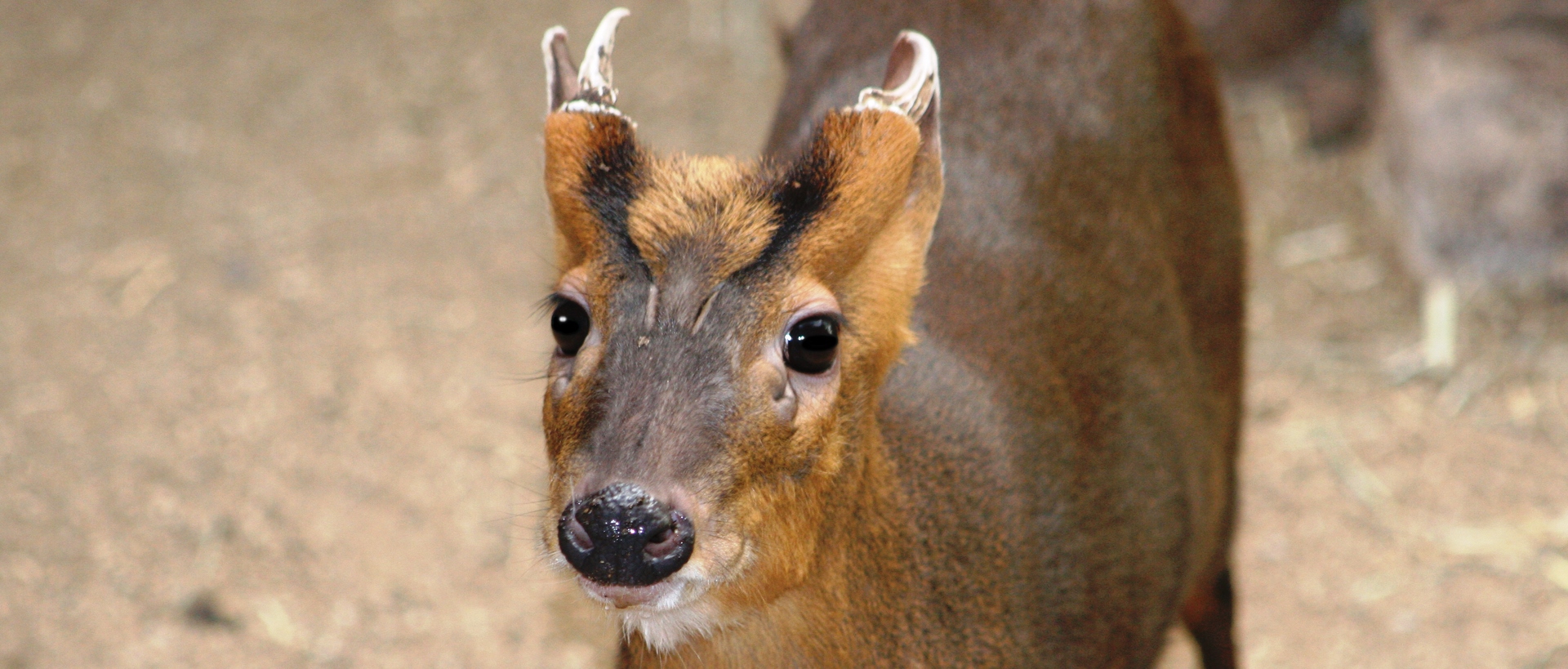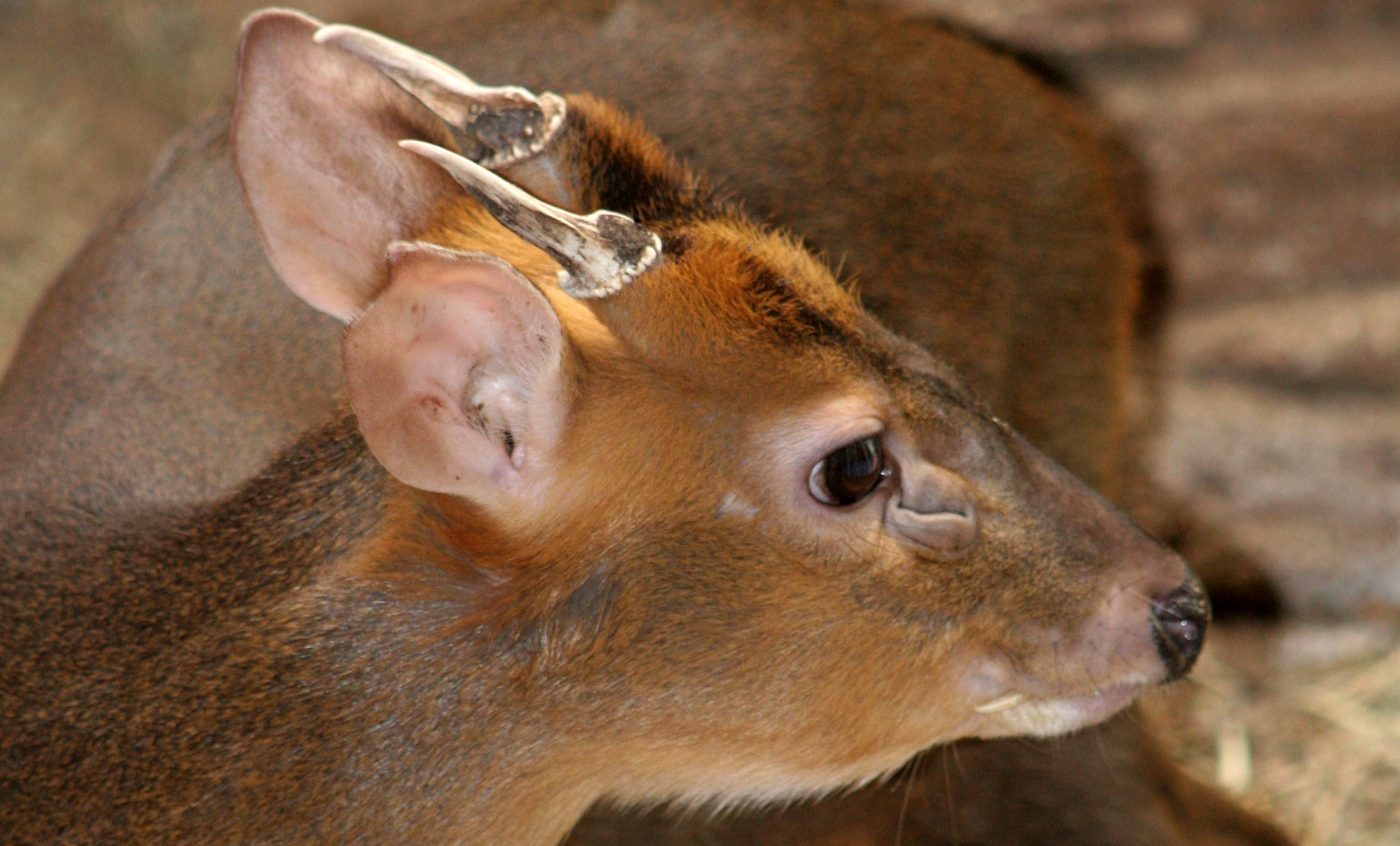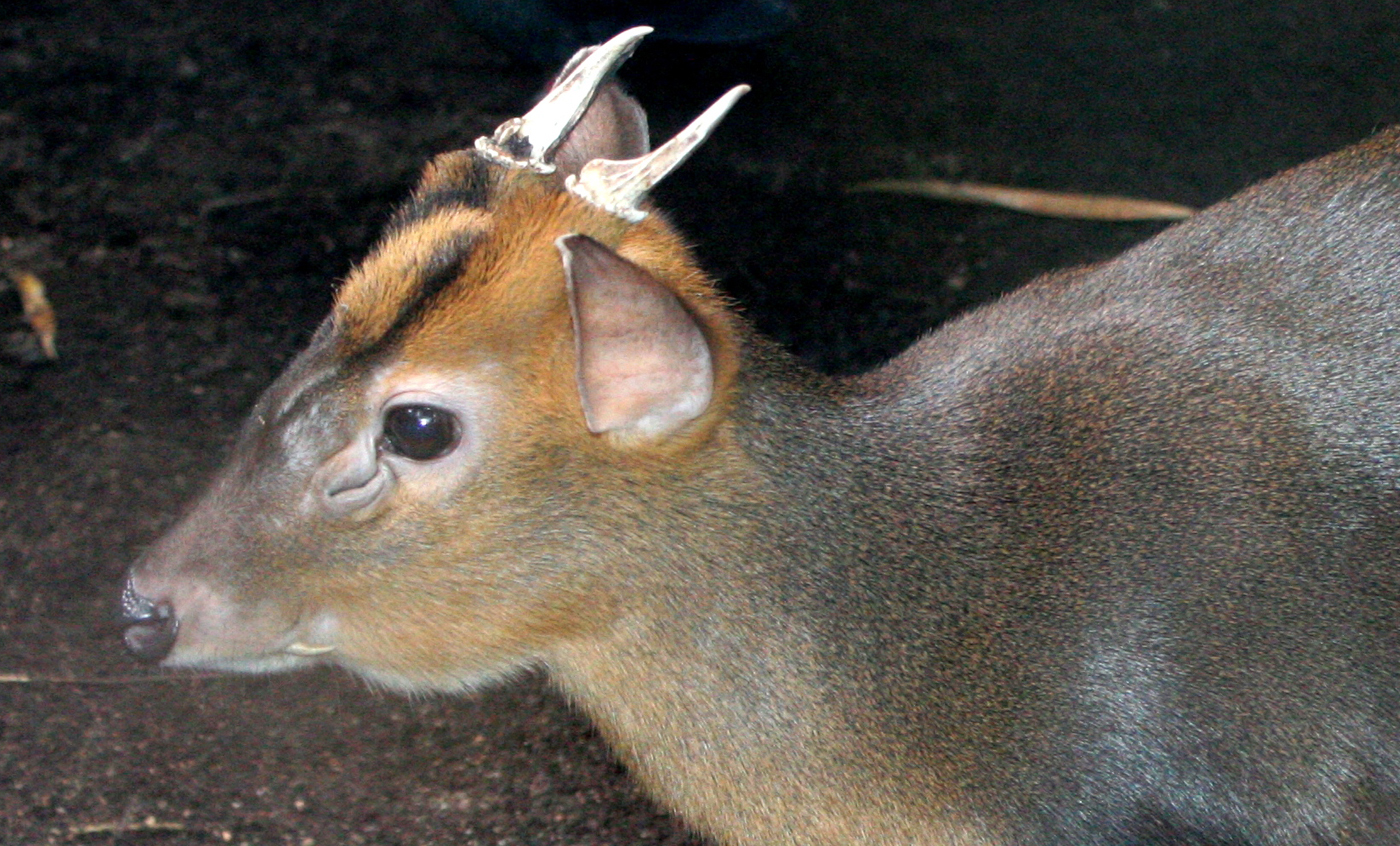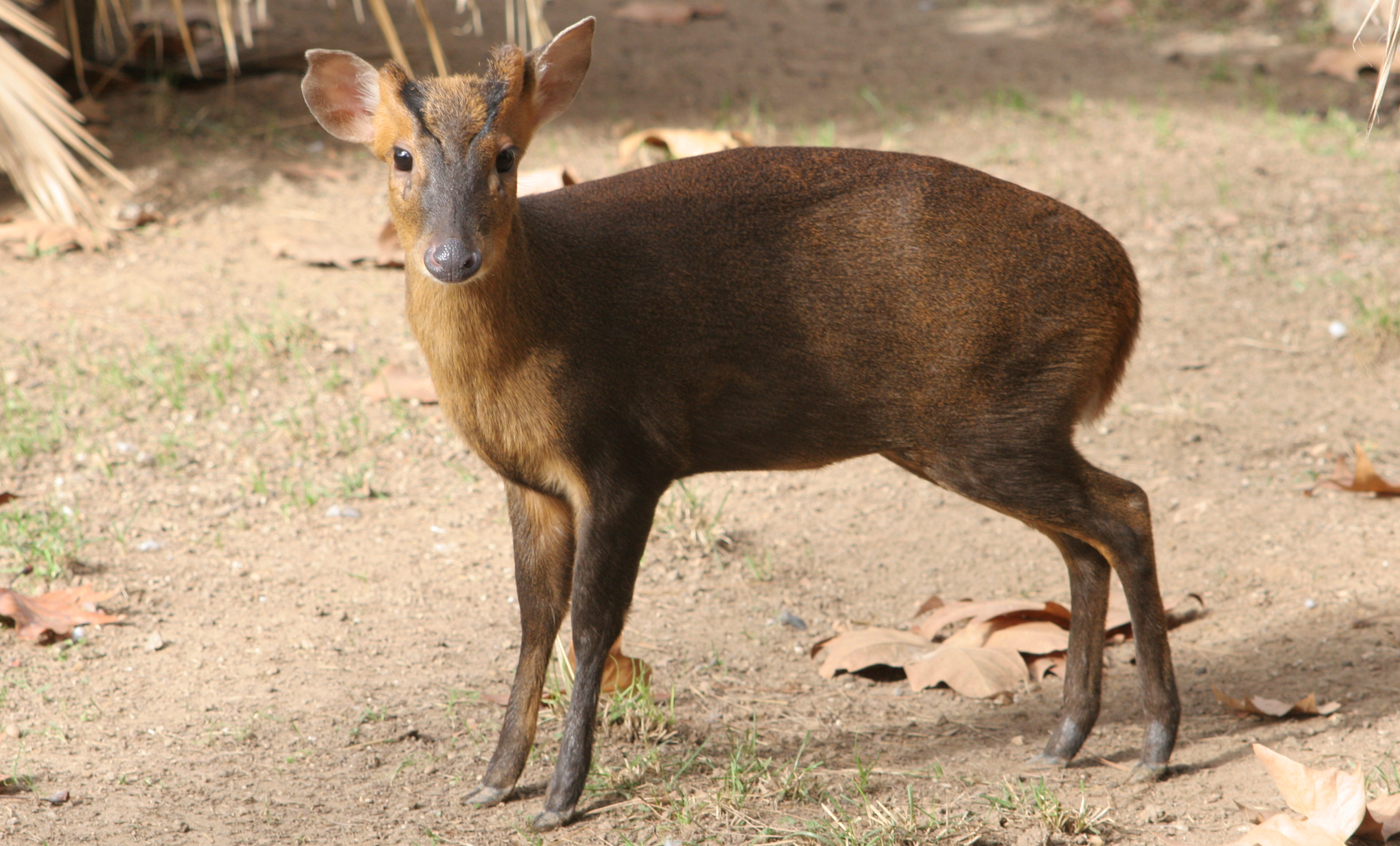Common muntjac
A small deer with rather well-developed tusks of up to 25 cm long in the male deer. This species lives a solitary existence, although mates sometimes co-habit for a time. They defend a small territory which they mark with secretions from their scent glands. When something startles them, they send out a kind of bark warning of nearby danger.
This is considered a common species in most areas where it is found and has been introduced to different parts of the globe.
Natural habit
Native from rainforests and forests of southern Asia and its distribution area goes from India and southern Nepal to southern China, the whole continental region of Southeast Asia, Malaysia and Indonesia.

- Distribution / Resident
- Breeding
- Wintering
- Subspecies
Risk level
- Extint
- Extint in the wild
- Critically endangered
- In Danger
- Vulnerable
- Near threatened
- Minor concern
- Insufficient data
- Not evaluated
Taxonomy
Physical characteristics
Biology
Reproduction
Biology
It is a small deer with tusk-like upper canine teeth. Males have small antlers, while females have bony knobs instead. Its coat is light brown, whitish on the belly, and a darker brown hue on the legs and face.
Its habitat includes rainforests, monsoon forests, secondary forests, tropical forests and even open areas near the margin of forests. It prefers to remain close to the available water resources.
It can be considered omnivorous. Although it mainly feeds on grass, leaves, roots, bark, fruits and seeds, it can also eat bird eggs and small animals it finds on the ground of rainforests. To hunt these little preys, the muntjac uses its canine teeth and limbs to hit them.
Both males and females are solitary and territory, and they only meet during their short oestrus.
Females reach sexual maturity before their first year and they can reproduce any time of the year. Calves separate from their mothers at six months.
Unlike most deer, this species has a solitary behaviour and is active either during the day or at night. Also known as “barking deer”, it gives calls similar to barking, upon sensing a predator. It often barks in environments with little visibility due to dense vegetation. Due to its reduced size, it has many predators, such as leopards, tigers, clouded leopards, crocodiles and python snakes.
It is considered a common species in most of its distribution area and has been introduced in many different parts of the world.






